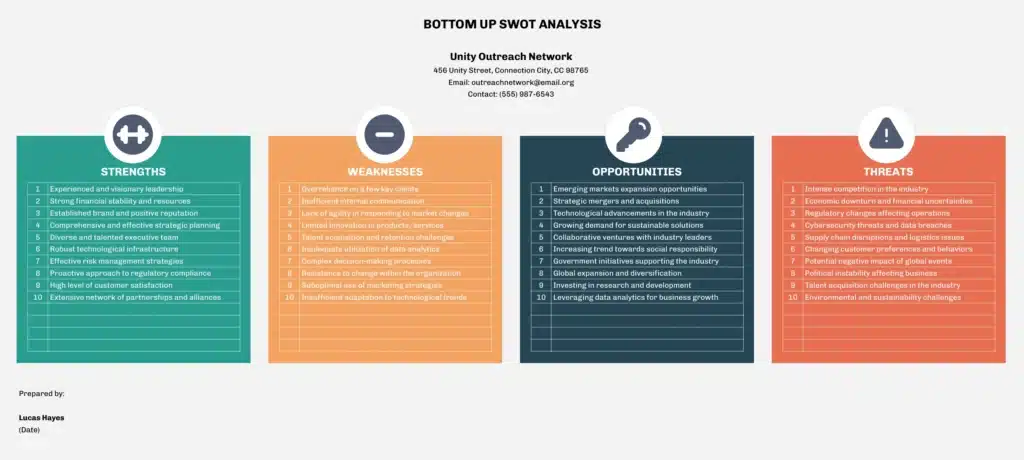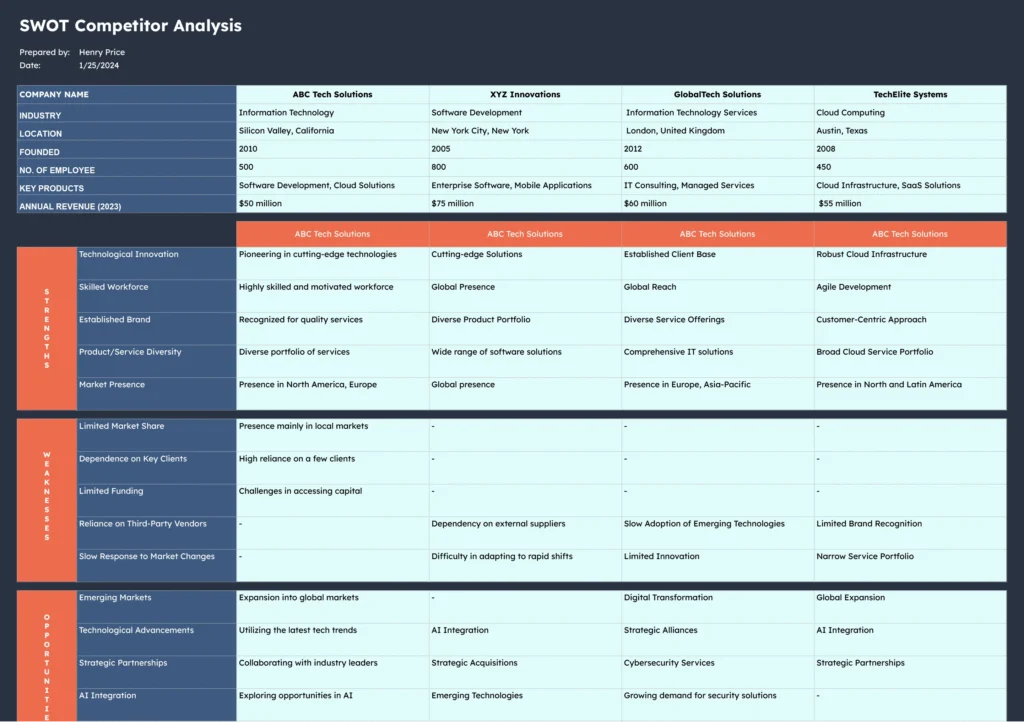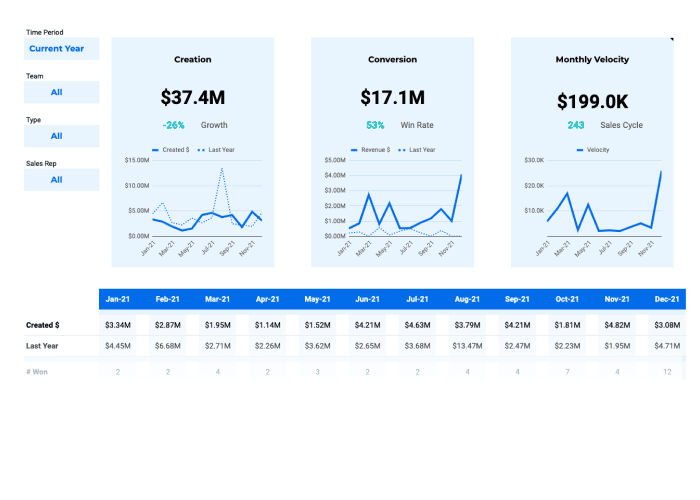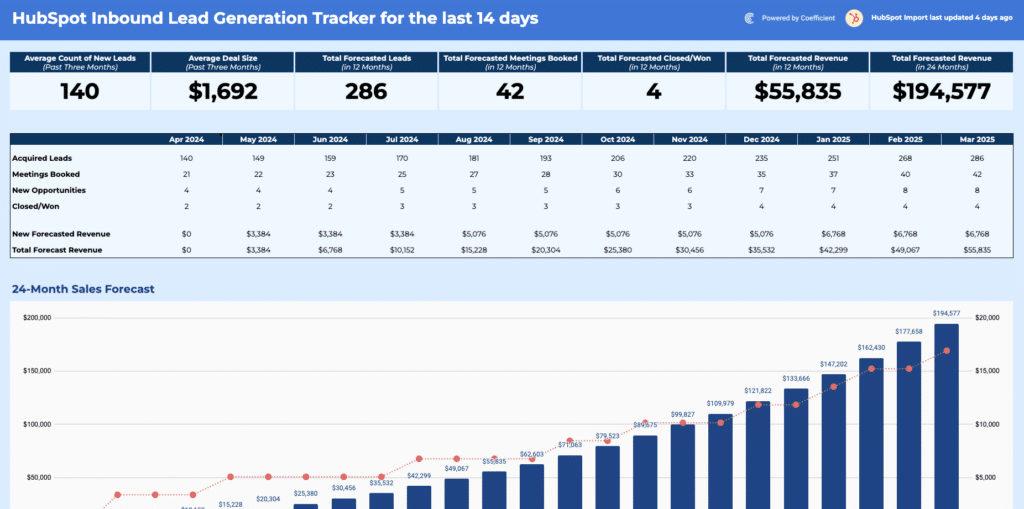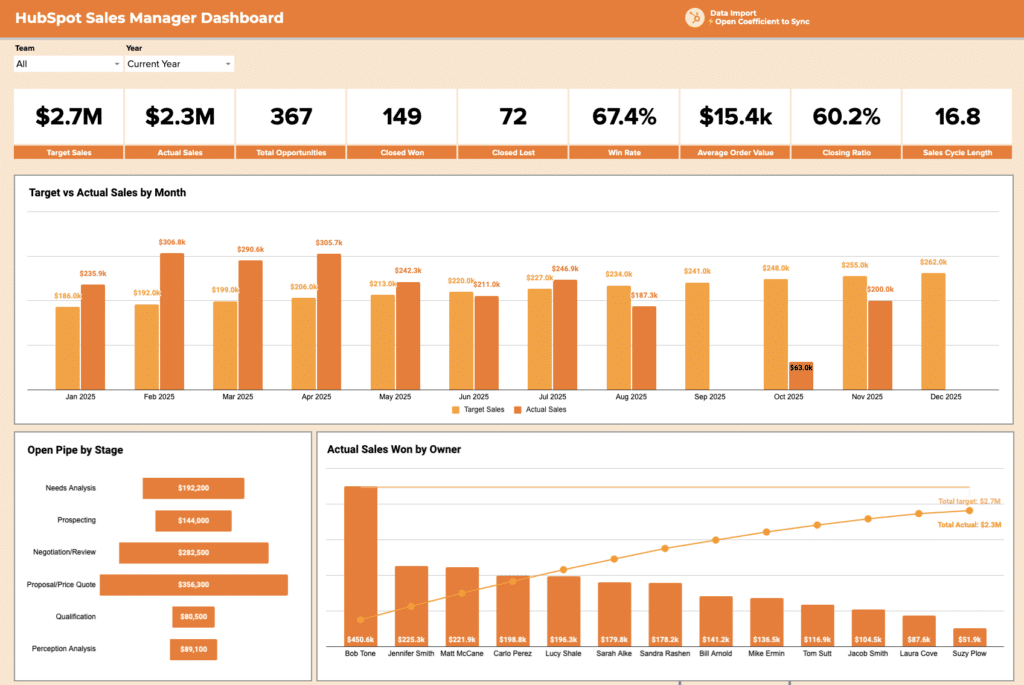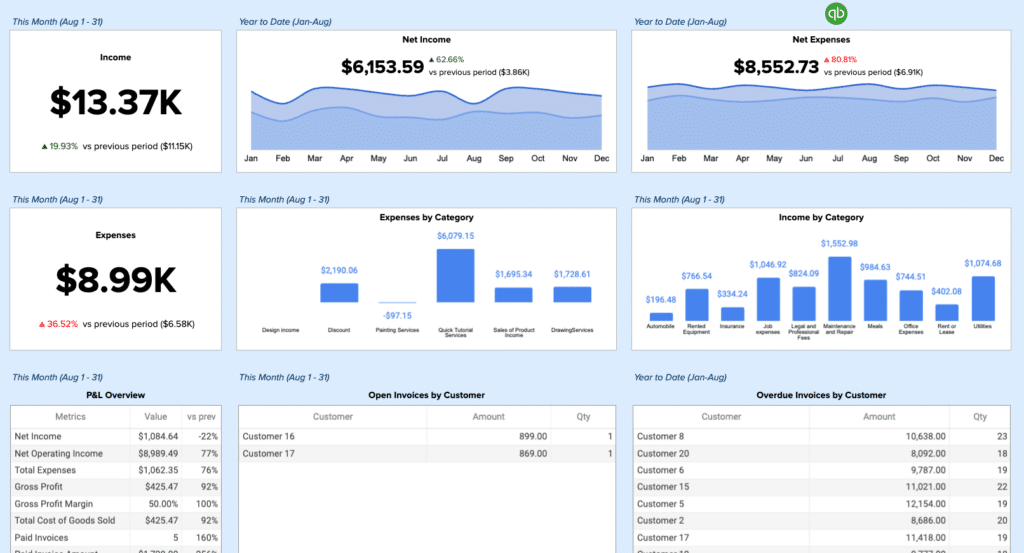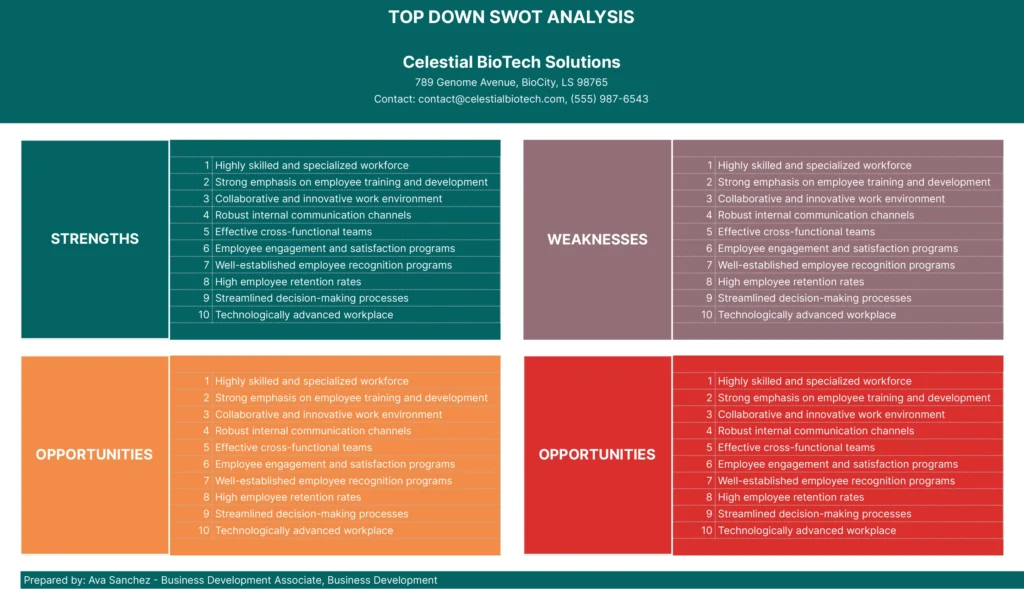Enhance Your Team’s Insight with Our Bottom Up SWOT Analysis Template
Leverage detailed input from all organizational levels with our Google Sheets Bottom Up SWOT Analysis Template, designed to capture diverse perspectives and drive strategic alignment.
Why Perform a Bottom Up SWOT Analysis?
Encourage Employee Engagement
Engaging employees at all levels encourages a sense of ownership and responsibility towards the strategic outcomes. This involvement can lead to more accurate and detailed data collection, providing a richer foundation for analysis.
Capture Diverse Perspectives
A bottom-up approach allows for the collection of unique insights from various operational levels, providing a more comprehensive view of the organization’s strengths, weaknesses, opportunities, and threats.
Ground-Up Insight for Strategic Planning
By integrating detailed, ground-level observations, a bottom-up SWOT analysis can uncover hidden challenges and opportunities that might be overlooked in top-down planning processes.
Features of Our Bottom Up SWOT Analysis Template
Comprehensive Input Fields
Our template is designed with detailed input fields that are easy to navigate and fill out, ensuring that all relevant information is captured comprehensively.
Facilitates Cross-Departmental Collaboration
The template encourages collaboration across departments, helping to break down silos and integrate diverse insights into the strategic planning process.
Easy to Customize and Integrate
Adapt the template to fit your organizational structure and specific needs, making it an integral part of your strategic analysis tools.
How to Use the Bottom Up SWOT Analysis Template Effectively
Initial Setup
Download the template and distribute it across departments, instructing team leaders to gather input from all members.
Encouraging Comprehensive Input
Ensure that every team member contributes, emphasizing the importance of diverse insights and the value of each employee’s perspective.
Synthesizing Data for Strategic Use
Collect the completed templates from each department and synthesize the data to identify common themes, unique propositions, and actionable strategies.
